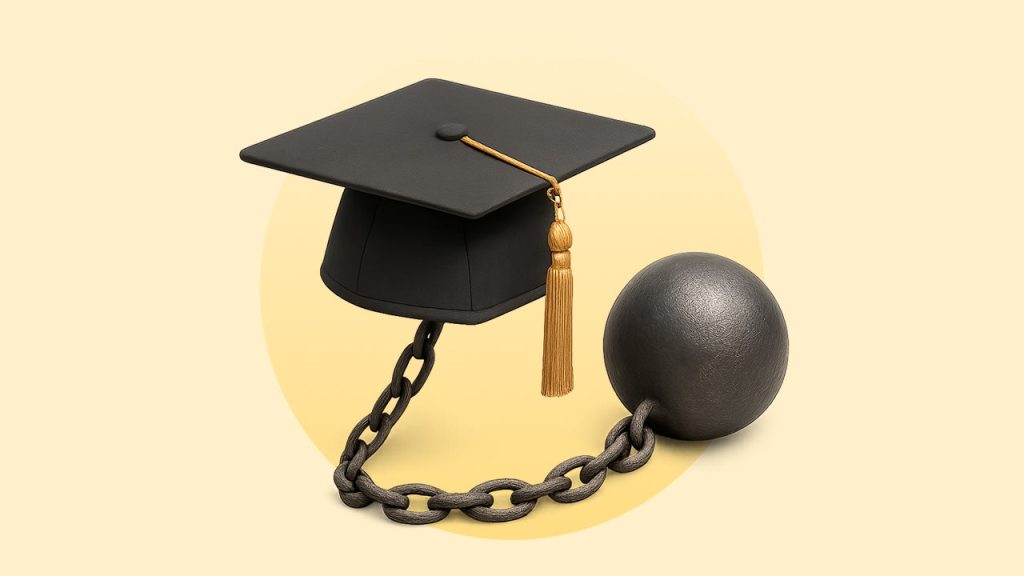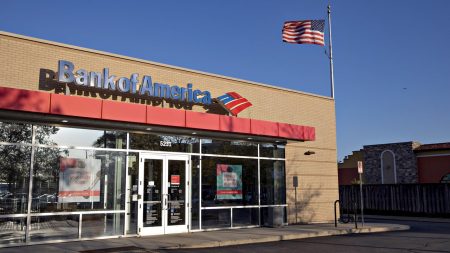Key takeaways
- Bankruptcy discharge of student loans is very difficult, but not impossible, and requires demonstrating undue hardship in an adversarial proceeding.
- Exceptions exist, such as the possibility of discharging loans that are not qualified education loans.
- Recent policy changes by the U.S. Departments of Education and Justice permit the bankruptcy discharge of some student loans in specific circumstances.
- Legislative proposals to make bankruptcy discharge of student loans more accessible are gaining traction, reflecting a growing consensus that current rules are too harsh.
Discharging student loans in bankruptcy has long been very difficult, earning student loans a reputation as non-dischargeable debt. However, it is still possible to discharge some student loans. The shifting landscape of student loan bankruptcy discharge is making it easier (although still not easy) to obtain a bankruptcy discharge, and proposed legislation brings a glimmer of hope for struggling borrowers.
You can obtain a bankruptcy discharge of most consumer debt, such as credit cards, but not student loans. The rules for bankruptcy discharge of student loans are too restrictive.— Mark Kantrowitz
50 years of restricting student loan bankruptcy discharges
Over the last five decades, Congress has made it more difficult to discharge student loans in bankruptcy.
- 1976
-
Education Amendments of 1976 requires five years of repayment before bankruptcy discharge
- 1981
-
U.S. Court of Appeals for the 8th Circuit defines undue hardship
- 1984
-
The Bankruptcy Amendments and Federal Judgeship Act of 1984 adds private student loans backed by nonprofits to the bankruptcy discharge exception
- 1987
-
U.S. Court of Appeals for the 2nd Circuit adds the requirement that borrowers make a good-faith effort to repay their student loan debt before discharge
- 1990
-
Crime Control Act of 1990 increases the required repayment period to seven years
- 1998
-
Higher Education Amendments of 1998 eliminates the waiting period
- 2005
-
BAPCPA redefines undue hardship and eliminates the need for private loans to be guaranteed by a nonprofit
Before 1976, student loans could be discharged in bankruptcy without exception, like other unsecured loans.
Then, the Education Amendments of 1976 required a borrower’s student loans to have been in repayment for at least five years before they could be discharged, unless the borrower could demonstrate that requiring the loans to be repaid would impose “undue hardship” on the borrower and the borrower’s dependents. The term “undue hardship” was not initially defined in the U.S. Bankruptcy Code.
This exception was restricted to institutional and federal student loans.
In 1981, the U.S. Court of Appeals for the 8th Circuit issued a decision in Andrews v. South Dakota Student Loan Assistance Corp that defined “undue hardship” using the Totality of Circumstances Test. The Totality of Circumstances Test has two prongs:
- The borrower must be currently unable to repay their student loans while maintaining a minimal standard of living, and
- The circumstances that prevent the borrower from repaying the debt must be expected to persist for most of the life of the loans. The Totality of Circumstances Test applies in the 8th circuit.
The Bankruptcy Amendments and Federal Judgeship Act of 1984 expanded the exception to bankruptcy discharge to include private student loans if they were backed by nonprofit institutions.
In 1987, the U.S. Court of Appeals for the 2nd Circuit issued a decision in Brunner v. NY HESC that redefined “undue hardship.” The Brunner Test adds a third prong to the Totality of Circumstances Test, requiring the borrower to have made a good faith effort to repay the debt. This is a very harsh standard that one bankruptcy judge, Judge Burton R. Lifland, described as requiring “a certainty of hopelessness.”
Keep in mind: The Brunner Test applies in the 2nd, 3rd, 4th, 5th, 6th, 7th, 9th, 10th and 11th circuits.
The Crime Control Act of 1990 increased the waiting period from five years to seven years, but then the Higher Education Amendments of 1998 eliminated the waiting period entirely. This left undue hardship as the only option for bankruptcy discharge of student loans.
The Bankruptcy Abuse Prevention and Consumer Protection Act (BAPCPA) of 2005 added an exception to discharge for qualified education loans. Qualified education loans are federal and private student loans that are eligible for the student loan interest deduction. Private student loans no longer needed to rely on a nonprofit guarantor to protect against bankruptcy discharge.
BAPCPA also added a general definition of undue hardship that establishes a presumption of undue hardship if the borrower’s monthly income is less than the monthly loan payments. This definition is similar to the first prong of the Totality of Circumstances Test and the Brunner Test. It is not, however, specific to the bankruptcy discharge of student loans.
Government, legislators weigh easier path to discharge
Recent years have brought a significant shift towards a more pragmatic approach to the bankruptcy discharge of federal student loans.
On Nov. 17, 2022, the U.S. Department of Education and the U.S. Department of Justice issued guidance concerning when the DOJ would not oppose a bankruptcy petition for federal student loans. The new policy avoids the expense of fighting a bankruptcy discharge when the cost of litigation exceeds the potential recovery or when the federal government is likely to lose the lawsuit.
This new policy represents a significant departure from the previous “scorched earth” approach that fought every bankruptcy filing, regardless of the cost.
A subsequent report by the DOJ presented data showing that this new policy led to an increase in bankruptcy discharge filings.
There have also been proposals in Congress to make it easier to discharge student loans in bankruptcy. None of these proposals have made it out of committee. But consensus is building that the current rules are too harsh.
Bankruptcy reform is sorely needed for struggling borrowers
Bankruptcy reform for student loans is long overdue.
Current bankruptcy law treats defaulted student loan borrowers as though they were criminals, tax cheats and deadbeats. It does not provide them with an opportunity for meaningful financial relief.
While federal student loans provide death and disability discharges, half of private student loans do not. Federal student loans offer income-driven repayment plans, though they cancel debt only after very long repayment terms that are akin to indentured servitude. Most private student loans do not even offer income-based repayment. The federal government can seize Social Security benefit payments that recipients need to survive, a morally bankrupt policy. The government gives with one hand while taking back with the other.
If Congress were to allow for bankruptcy discharge of student loans, it might encourage lenders to offer more opportunities for compromise with borrowers, lest they lose the loans entirely. There never was any evidence of abuse, but requiring seven years in repayment seems sufficient to prevent discharge of student loans immediately after graduation. Most of the discharges would be by borrowers who dropped out of college, not borrowers who graduated. These borrowers have the debt, but not the degree that can help them repay the debt.
Why finishing college could help solve the student loan crisis
Policymakers often blame student loan delinquencies and defaults on the amount of debt. But I argue there really isn’t a student loan problem, so much as a college completion problem.
Learn moreThe courts already require means-testing before permitting a discharge.
Congress should also provide a definition of undue hardship, so that a single standard applies nationwide.
How to bankrupt your student loans
Only about 0.04% of student loan borrowers who file for bankruptcy succeed in discharging their student loans.
Discharging student loans in bankruptcy generally requires demonstrating undue hardship in an adversarial proceeding.
In some cases, however, demonstrating undue hardship might not be necessary.
- If the lender cannot provide proof that the debt is owed, such as a signed promissory note, the courts will sometimes allow the discharge of the debt.
- If the borrower was ineligible for the student loans at the time they were made, the loans will be discharged. For example, some borrowers have been able to get their federal student loans discharged by demonstrating that they were incarcerated in federal or state prison.
- Some loans are not qualified education loans — for example, if the loan was made for study at an ineligible college, to an ineligible student (one enrolled less than half-time or while not pursuing a degree or certificate), or for expenses other than qualified educational expenses.
Demonstrating undue hardship
Demonstrating undue hardship often depends on the borrower’s health, age, education and number of dependents, if these factors affect the borrower’s expenses or income.
Why we ask for feedback Your feedback helps us improve our content and services. It takes less than a minute to complete.
Your responses are anonymous and will only be used for improving our website.
Help us improve our content
Read the full article here









